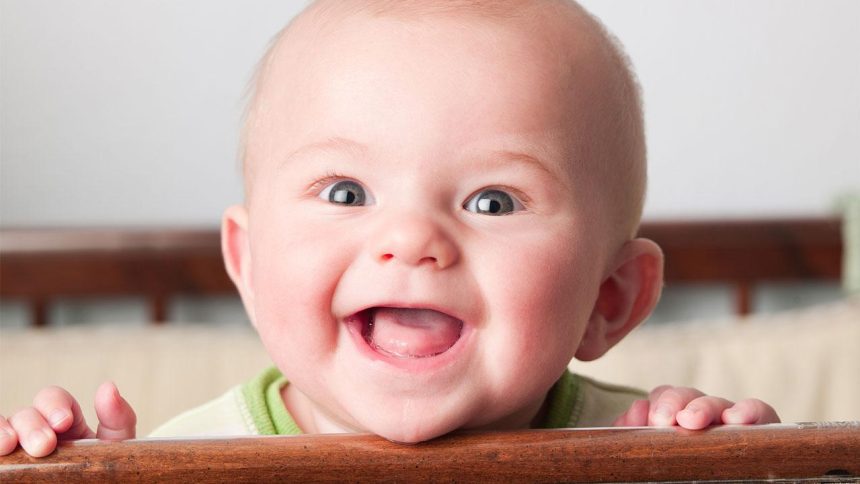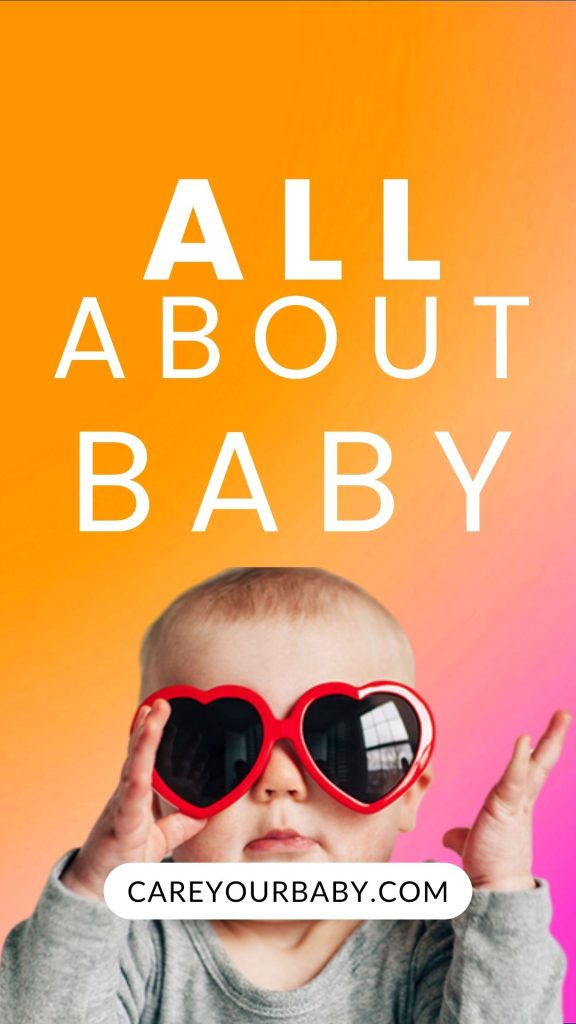In the delightful realm of early childhood, laughter is often heralded as a universal language of joy, a melody that resonates with the innocence and wonder of babies. But as parents and caregivers watch their little ones erupt in fits of giggles, a curious question may arise: Is it possible for babies to laugh too much? Can this joyful exuberance be a harbinger of something more complex? In this article, we embark on a journey to explore the significance of laughter in a baby’s development, dissect the science behind their infectious giggles, and uncover the layers of emotion and health tied to that precious sound. Join us as we delve into the enchanting world of baby joy, seeking to understand not just the laughter itself, but what it reveals about the happiest stage of life.
The Science Behind Baby Laughter and Emotional Development
When babies laugh, it’s not just a delightful sound; it’s a complex interplay of neurological and emotional development. Researchers have found that laughter in infants serves as a fundamental indicator of their emotional health. This joyful outburst signals the release of neurochemicals like dopamine and endorphins, promoting feelings of happiness and reducing stress. As babies laugh, they also engage with caregivers, creating essential social bonds that enhance their security and trust in the world around them.
Moreover, laughter fosters cognitive growth by stimulating brain development. When infants experience laughter, they learn to recognize social cues, context, and the responses of those around them. This interaction can be broken down into several key components:
- Social Skills: Learning to interact and connect with others.
- Emotional Regulation: Understanding and expressing their feelings.
- Communication: Developing verbal and non-verbal skills.
In essence, laughter acts as a natural teacher, guiding infants through a world filled with wonder. The laughter that fills a room not only brings joy but also serves as a vital building block for emotional resilience and overall well-being.
Exploring the Benefits of Laughter for Infants and Caregivers
Laughter is often seen as a universal language, transcending age and culture, and when it comes to infants and caregivers, the benefits of shared laughter are profound. For babies, **laughter stimulates their developing brains**, fostering cognitive growth and emotional resilience. It encourages the release of endorphins, the body’s natural feel-good hormones, which not only boost the baby’s mood but also enhance their overall sense of well-being. **Laughter also aids in social bonding**, providing a playful interaction space where babies learn to connect with their caregivers. These moments of joy can help develop critical communication skills that infants will rely on as they grow and interact with the world around them.
For caregivers, engaging in laughter with infants serves as a stress reliever and fosters a deeper emotional connection. **The act of laughing together** creates a shared experience that can strengthen the caregiver-infant bond, contributing to secure attachment and emotional development. It can also enhance the caregiver’s mood, leading to improved mental health, which is essential for providing the nurturing environment that infants need. The ripple effect of laughter includes benefits such as better communication, enhanced creativity during playtime, and an overall joyful experience that enriches both the caregiver’s and the infant’s lives. Here are a few benefits to consider:
- Cognitive Development: Promotes brain growth and learning.
- Social Skills: Enhances interaction and bonding.
- Emotional Well-being: Boosts happiness for both baby and caregiver.
- Stress Relief: Lowers anxiety levels through joyful engagement.
When Laughter Becomes Overstimulation: Recognizing the Signs
While laughter is often seen as a sign of happiness, it’s essential to recognize that there can be a tipping point for little ones. Babies, with their enchanting giggles, may sometimes laugh so much that it leads to overstimulation. Signs of this can include changes in their breathing patterns, fidgeting, or even sudden irritable outbursts after moments of joy. Understanding these signals is crucial for caregivers, as it can help maintain a balanced and nurturing environment that encourages healthy emotional expressions without overwhelming the child.
Some indicators of overstimulation can be subtle, yet parents and guardians can learn to identify them. Noticing how a baby reacts after multiple playful moments can offer insights into their comfort levels. Here are some common signs of overstimulation:
- Increased fussiness: A once giggly baby may suddenly become upset or cry.
- Distraction: They may turn their head away from stimuli or struggle to focus on toys.
- Sensory overload: Signs may include tense body language or clenching of fists.
Being attuned to these changes allows caregivers to step in with comfort measures, like holding the baby close or providing a quieter environment, ensuring that laughter remains a source of joy rather than a catalyst for distress.
Creating a Balanced Environment for Joyful Interactions with Babies
Creating a harmonious atmosphere is crucial for fostering genuine connections with infants, as their interactions often hinge on the emotional climate around them. By prioritizing a **balanced environment**, caregivers can amplify the joyful exchanges that prove beneficial for babies’ emotional and social development. Here are some essential components to maintain this equilibrium:
- Safe Space: Ensure the area is baby-proofed, allowing freedom for exploration without anxiety.
- Soft Sounds: Incorporate soothing music or white noise to create a calm backdrop for playful laughter.
- Comfortable Touch: Use gentle materials and textures in toys and blanket to provide sensory comfort.
- Engagement: Encourage parental interaction through simple games and facial expressions that promote bonding.
In addition, it’s important to recognize that babies naturally seek laughter and joy, which serves as an important part of their communication as they grow. Here’s a concise overview of the types of joy-inducing interactions:
| Interaction Type | Description |
|---|---|
| Peek-a-Boo | A simple game that elicits surprise and happiness, enhancing cognitive skills. |
| Tickle Time | Light tickling stimulates laughter, strengthening emotional ties. |
| Funny Faces | Making silly expressions encourages responsiveness and joy. |
| Singing | Melodic sounds can calm or excite, making every interaction a delightful experience. |
Q&A
Q&A: Is It Bad for Babies to Laugh Too Much? Understanding Baby Joy
Q1: Is it possible for babies to laugh too much?
A: Not at all! Laughter is a natural and healthy expression of joy for babies. It’s one of their primary ways of communicating happiness and building connections with those around them. Giggles help stimulate cognitive development and promote social bonding.
Q2: What are the benefits of laughter for babies?
A: Laughter offers numerous benefits! It enhances emotional well-being, fosters social interaction, and can even support physical health by boosting the immune system. When babies laugh, they engage in pleasurable experiences that help form strong neural connections in their developing brains.
Q3: Can excessive laughter be a sign of something wrong?
A: While laughter is usually a sign of happiness, excessive laughter in certain contexts could indicate a need for attention or a response to discomfort. For example, if a baby laughs uncontrollably during a stressful situation, it could be a coping mechanism. Watching for the context and accompanying behaviors is key.
Q4: How can I encourage my baby to laugh?
A: Encouragement can come through playful interactions! Tickling, funny faces, singing silly songs, and engaging in games like peek-a-boo can evoke laughter. Being present and responsive to your baby’s cues can also help create an environment where laughter flourishes.
Q5: Can too much laughter actually tire a baby out?
A: Like any form of stimulation, it’s possible that too much laughter, especially when combined with other exciting activities, could lead to overstimulation. Babies can become tired after bursts of joyful play. Watching for signs of fatigue is crucial; after a good laugh, a cuddle or nap may be just what they need.
Q6: Should I be concerned if my baby laughs at inappropriate times?
A: Babies are still learning how to navigate social cues, so laughter during unexpected moments may not necessarily be cause for concern. It often reflects their developing sense of humor or simply the joy of being in a lively environment. If the behaviors are persistent and concern you, discussing it with a pediatrician can provide peace of mind.
Q7: How does laughter affect a baby’s bond with caregivers?
A: Laughter is a powerful tool for bonding! When caregivers engage in playful interactions that elicit giggles, it deepens emotional connections. It fosters trust and safety, making the baby feel secure and more inclined to explore the world around them.
Q8: In what ways can laughter contribute to a baby’s development?
A: Laughter can significantly promote a baby’s cognitive and social development. It encourages them to explore their environment, learn about cause and effect, and understand the nuances of social interactions. Through laughter, babies also practice emotional regulation, learning to express and manage their feelings.
Q9: What if my baby seems to laugh randomly?
A: Random laughter is often a part of a baby’s natural exploration. They might be processing new information or simply enjoying their own thoughts. This randomness is quite normal as babies have vivid imaginations and are discovering the joy of existence!
Q10: What’s the bottom line on babies and laughter?
A: Ultimately, laughter is an essential aspect of a baby’s growth and happiness. It’s not only delightful to hear but also plays a crucial role in their emotional, social, and cognitive development. Encouraging laughter while being mindful of your baby’s cues creates a joyful and nurturing environment for their growth. So let the giggles roll!
In Summary
while the sounds of a baby’s laughter are often music to our ears, the inquiry into whether too much laughter can be detrimental is both fascinating and nuanced. As our understanding of infant development continues to evolve, it’s clear that laughter serves not merely as a delightful response but also as a vital mechanism for emotional and social growth. Encouraging a joyful environment can promote bonding and help establish valuable emotional connections, while being mindful of a baby’s cues ensures a balanced approach to their well-being.
Ultimately, the heartwarming giggles of a baby are a reminder of the simple yet profound joys of life, encouraging us to celebrate those moments of pure happiness. As caregivers, our role is to nurture that joy while fostering a safe and supportive atmosphere where laughter can thrive. So, let’s embrace the giggles, cherish the joy, and remember that in the world of babies, laughter is more than just a sound—it’s a key to understanding the wondrous journey of growth and connection.


